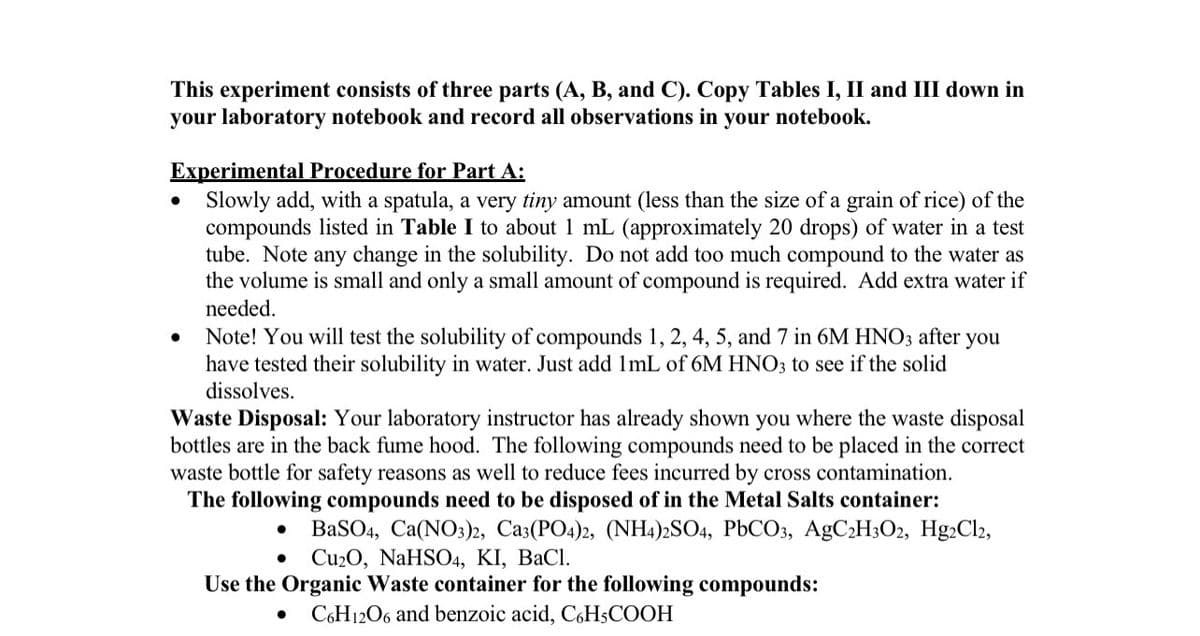This experiment consists of three parts (A, B, and C). Copy Tables I, II and III down in your laboratory notebook and record all observations in your notebook. Experimental Procedure for Part A: Slowly add, with a spatula, a very tiny amount (less than the size of a grain of rice) of the compounds listed in Table I to about 1 mL (approximately 20 drops) of water in a test tube. Note any change in the solubility. Do not add too much compound to the water as the volume is small and only a small amount of compound is required. Add extra water if needed. • Note! You will test the solubility of compounds 1, 2, 4, 5, and 7 in 6M HNO; after you have tested their solubility in water. Just add ImL of 6M HNO3 to see if the solid dissolves. Waste Disposal: Your laboratory instructor has already shown you where the waste disposal bottles are in the back fume hood. The following compounds need to be placed in the correct waste bottle for safety reasons as well to reduce fees incurred by cross contamination. The following compounds need to be disposed of in the Metal Salts container: BaSO4, Ca(NO:)2, Ca3(PO4)2, (NH4)2SO4, P6CO3, AgC2H3O2, H92C12, Cu2O, NaHSO4, KI, BaCl. Use the Organic Waste container for the following compounds: C6H1206 and benzoic acid, C6H3COOH
Summarize the Experimental Procedures(Part A, B, C IN YOUR OWN WORDS AND IN BULLET POINTS:
Experimental Procedure for Part B: Place each compound in the first column in a well of a
spot plate. If a compound is a solid and not a liquid, add a small amount of water to it and stir.
For all solutions, use 0.1 M provided in lab. Use a conductivity device to determine if the
substance is conducting or not. Record the relative brightness of the light or absence of light. A bright light only indicates more ions are in solution compared to a dim light, not whether it is a strong or weak electrolyte. The concentration of ions must be known to make a more definitive conclusion. The absence of a light indicates that ions are not present. Only the ends of the two copper probes of the device should be in the solution. On the back of the
conductivity device is a guide for you to use.
Experimental Procedure for Part C: Add approximately 2-3 drops of each pair of reactants in the first column to a test tube. Use 0.1 M solutions for all reactants except when noted differently. Record your observations in column Experimental Observations. Be sure to note the formation of a precipitate, any color change, color of precipitate, evolution of a gas, etc. For a "b" reaction, add 6 drops of the indicated reagent to the precipitate that is left in the well plate to determine if it dissolves. Record your observations in your notebook.

Trending now
This is a popular solution!
Step by step
Solved in 2 steps






